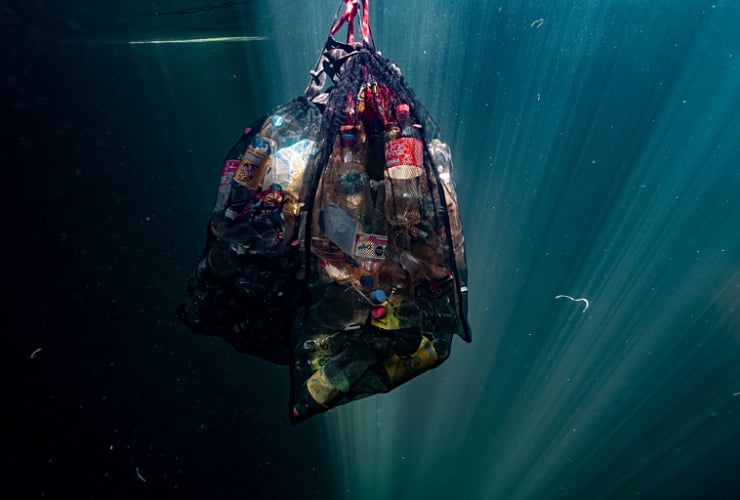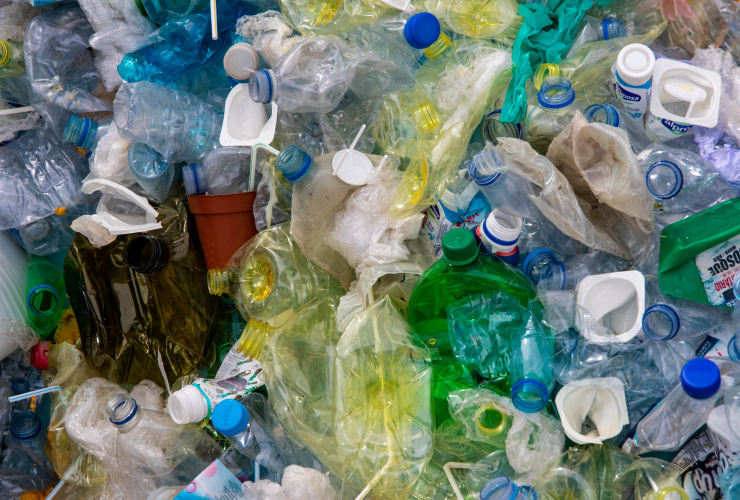For years, Canadians have been sounding the alarm about our staggering plastic consumption — where our most recent data estimates that 978,000 tonnes of plastic packaging waste were produced in 2022 through residential recycling systems and waste management initiatives, with only 20 per cent of it being recycled.
We’re living in a time when products across almost every sector are made with at least some plastic components. And we’ve become accustomed to single-use plastic packaging as the most convenient way to consume goods.
The need for change is not just knocking, it's pounding at our door with a sense of urgency we cannot ignore.
As committed Partners of the Canada Plastics Pact (CPP), we are charting a bold course toward a future free from plastic waste and pollution. This journey isn't just about the plastic items we discard, it's an examination of the materials we choose to create and the legacy we leave behind.
The fact is that the overwhelming production and disposal of plastics have outstripped Canada's recycling infrastructure. And the path to enhancing our recycling efforts is strewn with obstacles — contamination, the complexity of plastic materials, inadequate sorting processes. While recycling plays a crucial role, it's just one piece of a larger puzzle.
The reality is that recycling alone will not eliminate plastic waste. Our efforts must begin at the source, tracing the life cycle of plastics and ultimately creating a circular plastics economy.
Nature teaches us the profound lesson that all paths are interconnected. In our quest to address the plastic challenge, we must adopt this perspective and consider the entire journey of these materials with the intention of reducing plastics throughout the system.
Plastics, with their vast applications and complexities, have become both ubiquitous and deeply embedded in supply chains. This deep entrenchment requires thoughtful strategies, collaboration and innovation at all levels to rapidly scale solutions.
In response, a cross-section of CPP partners from across the plastics value chain have collaborated to develop, on behalf of the CPP, guidance for industry to take urgent measures to eliminate 13 unnecessary and problematic plastics. This guidance allows the industry to determine whether various plastic packaging is necessary, and if it is, what packaging is likely to have a place in the circular economy.
The criteria for reaching this decision involved evaluating plastics that are avoidable, contain hazardous chemicals, are not recyclable, hinder recycling efforts or are highly prone to becoming litter.
Proactive industry engagement in seeking solutions for these 13 unnecessary and problematic items will foster pioneering innovation and unlock economic value, particularly when implemented at scale.
We don't have all the solutions yet, but we are driven by an innovative and collaborative spirit inspired by 10 other plastics pacts worldwide; Canada's Zero Plastic Waste Agenda; the UN Global Plastics Treaty; and other domestic and international initiatives that are leading the charge in addressing unnecessary and problematic plastics in their respective regions.
We are calling on industry leaders from across the value chain to use this new guidance and begin eliminating these 13 unnecessary and problematic plastics. Join us to help drive the innovation and collaboration needed to accelerate solutions and magnify our impact.
Craig Hodge serves as the Chair of the National Zero Waste Council, and isvice-chair of the Metro Vancouver Zero Waste Committee.
Christina Seidel holds a PhD in engineering management and has an extensive background in circular economy and waste reduction. She operates sonnevera international corp., a waste reduction consulting firm, and was the executive director of the Recycling Council of Alberta for 30 years, where she has been very involved in the waste management policy development arena.
As executive director of Mind Your Plastic, Natasha Tucker advocates for a plastic-pollution-free Canada by creating lasting and impactful relationships and leading the organization’s team of passionate and engaged team members.
Some comments originating, in
Some comments originating, in part, from the “marketing spin” nature of this piece.
“…where our most recent data estimates that 978,000 tonnes of plastic packaging waste were produced in 2022 through residential recycling systems and waste management initiatives…”
I read this several times and still don’t know what it means. Recycling systems produce (i.e. originate) waste?
“The fact is that the overwhelming production and disposal of plastics have outstripped Canada's recycling infrastructure.”
Canada’s “recycling infrastructure” has never been “outstripped” (which use, in my reading, implies it was at one time sufficient); rather, the plastics stream from raw materials to landfill was never designed to be anything else. Recycling stamps on formed plastics are tacked on, as is the recycling effort.
A more correct version:
“The fact is that plastics recycling infrastructure has never been fit for purpose and, we believe, has been falling behind since the idea was first introduced. One step forward, two steps back.”
“For years, Canadians have been sounding the alarm about our staggering plastic consumption…”
It's nice to believe that, but what’s the evidence? It seems to me that a corollary might be: “Canadians have been sounding the alarm about the amount of GHG emissions from their discretionary air travel.”
“We are calling on industry leaders from across the value chain to use this new guidance and begin eliminating these 13 unnecessary and problematic plastics. Join us to help drive the innovation and collaboration needed to accelerate solutions and magnify our impact.”
This paragraph describes closing the barn door after the horse has escaped; what’s missing is the call for regulation that prevents the horse from being in the barn in the first place. What happens when the 14th “unnecessary and problematic” plastic is developed and marketed? That is to consider : how many new plastics are invented every year?
But isn’t that in keeping with the typical approach to chemical industry oversight: do what you want and if people start growing third ears, or dying young, or slide out of the womb missing limbs more often, or entire branches of nature’s taxonomy start dying out, then we’ll begrudgingly take a look?
What’s preventing the authors from advocating “full precaution”?
Yeah, what was the figure, 90
Yeah, what was the figure, 90% of plastics sent to be recycled are not, in fact, recycled? The whole idea was a greenwashing thing from the plastics producers from the get-go.








Comments